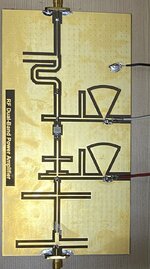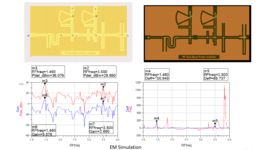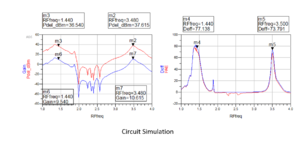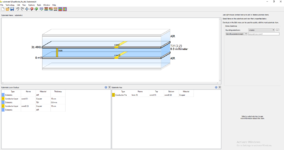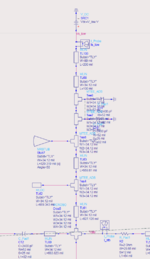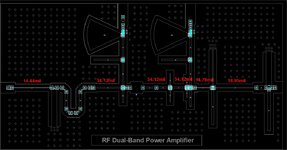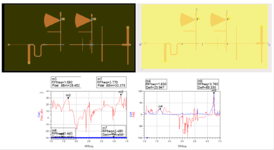dangan1993
Junior Member level 3

Hi everyone. I am a PHD student.
Currently, I try to design a dual band power amplifier at 1.4 and 3.5 GHz using CGH40006P transistor. I have gone to the last step of measurement with circuit shown in the attached picture, but my circuit just works well at 1.3 GHz and no gain appears in the high band. I see that my circuit has no problems in fabrication and just contains little lumped components as DC and bypass capacitors. Can someone give me recommendations to check as well as fix the problem. Thank you very much.
Currently, I try to design a dual band power amplifier at 1.4 and 3.5 GHz using CGH40006P transistor. I have gone to the last step of measurement with circuit shown in the attached picture, but my circuit just works well at 1.3 GHz and no gain appears in the high band. I see that my circuit has no problems in fabrication and just contains little lumped components as DC and bypass capacitors. Can someone give me recommendations to check as well as fix the problem. Thank you very much.
